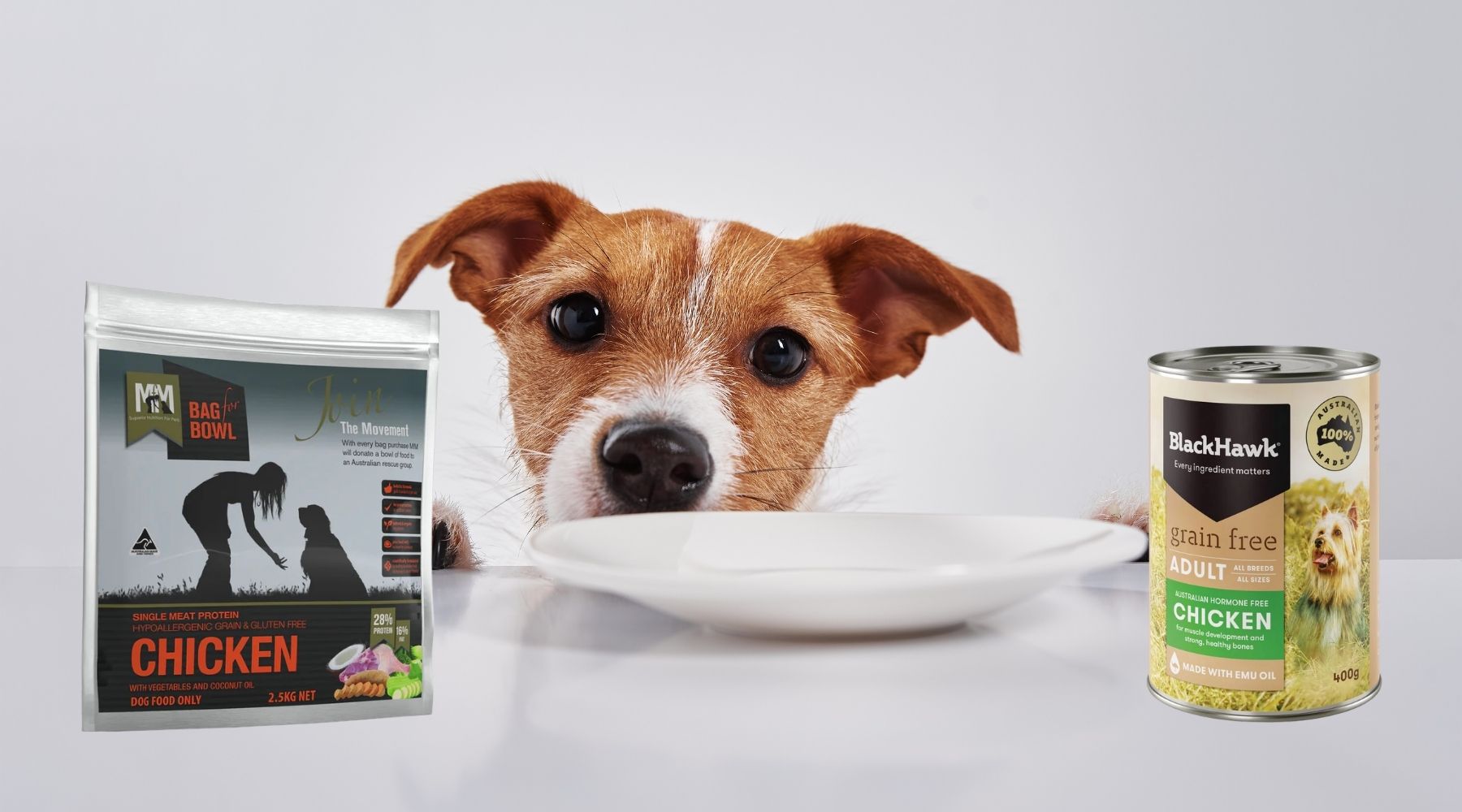When it comes to feeding your dog, one of the biggest choices pet parents face is whether to go with dry kibble, wet food, or a mix of both. Each option has its pros and cons, and the right choice often depends on your dog’s age, health, lifestyle, and even personality. At Pet Variety, we know every dog is unique — so let’s break down the differences to help you make the best decision for your furry friend.
What is Dry Dog Food?
Dry dog food, commonly known as kibble, is made by combining ingredients such as meat, grains, vegetables, and vitamins, then cooked and dried into small crunchy pieces. It’s the most popular option among dog owners in Australia — and for good reason.
Benefits of Dry Dog Food:
- Convenience: Easy to measure, store, and serve.
- Dental Health: Crunchy texture may help reduce tartar build-up.
- Cost-Effective: Often more affordable than wet food.
- Shelf Life: Longer-lasting once opened.
Potential Drawbacks:
- Lower Moisture Content: Not ideal for dogs that don’t drink much water.
- Palatability: Some fussy eaters may find kibble less appealing.
What is Wet Dog Food?
Wet dog food is usually sold in cans, trays, or pouches and contains higher levels of moisture. It often has a stronger aroma and softer texture, making it popular with picky eaters or dogs with dental issues.
Benefits of Wet Dog Food:
- Hydration Support: High water content helps dogs stay hydrated.
- Highly Palatable: Strong smell and soft texture appeal to even the fussiest pups.
- Gentle on Teeth: Easier for senior dogs or those with dental problems.
- Variety: Available in a wide range of flavours and textures.
Potential Drawbacks:
- Cost: Typically more expensive than dry food.
- Storage: Opened cans must be refrigerated and used quickly.
- Dental Care Needed: Lacks the crunch that can help keep teeth clean.
Which is Healthier — Dry or Wet?
Neither option is “better” across the board — it depends on your dog’s needs.
- For active dogs: Dry food may provide a calorie-dense, balanced diet that’s easy to portion.
- For fussy eaters or dogs with dental issues: Wet food may be more appealing and easier to eat.
- For hydration concerns: Wet food supports water intake, especially in warmer climates.
- For budget-conscious owners: Dry food is often the more economical choice.
Many vets recommend a combination feeding approach — mixing dry and wet food to get the best of both worlds.
Mixing Dry and Wet Food
A popular middle ground is offering both. This method allows your dog to enjoy the crunch of kibble and the taste of wet food, while also balancing nutrition and hydration.
Tips for Combining Food:
- Mix wet food into kibble for added flavour.
- Use wet food as a topper to encourage picky eaters.
- Balance portions to avoid overfeeding.
- Always transition slowly to prevent tummy upsets.
Choosing the Right Option for Your Dog
When deciding between dry, wet, or mixed feeding, consider the following:
- Your Dog’s Age: Puppies often need calorie-rich, soft foods, while adults may benefit from the crunch of kibble.
- Health Concerns: Senior dogs or those with dental/medical issues may need softer food.
- Lifestyle: Busy owners often prefer the convenience of dry food.
- Budget: Wet food can be costly if fed exclusively.
If you’re unsure, consult your vet for personalised advice.
So, Which is Best for Your Dog?
The truth is, there’s no one-size-fits-all answer. Some dogs thrive on dry food, others do better on wet, and many enjoy a combination of both. The best choice depends on your dog’s unique needs and your family’s lifestyle.
At Pet Variety, we stock a wide range of dry dog foods and wet dog foods, along with everything else you need to keep your pup happy and healthy. Whether you’re after kibble, canned meals, or enrichment treats, we’re here to help you make the right choice for your four-legged family member.
